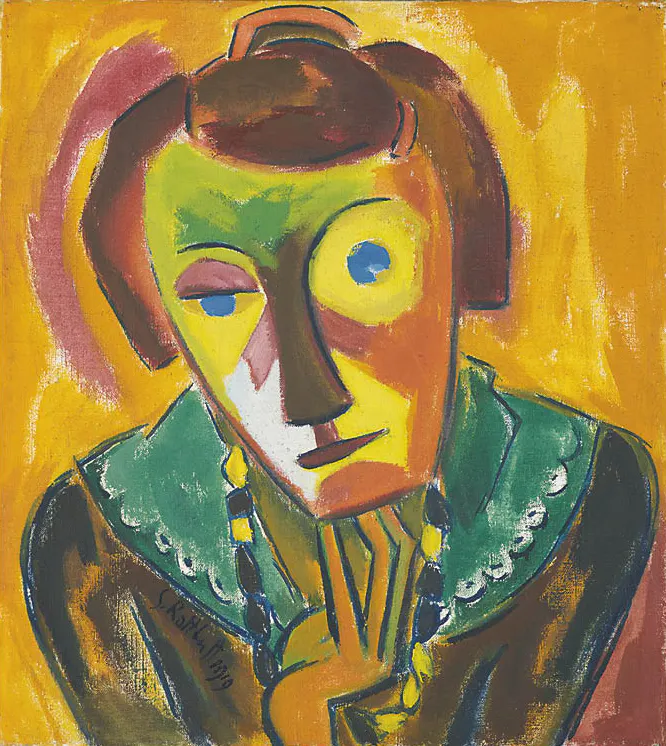
- Magazine Article
- Collection
- Exhibitions
Together and Apart
Karl Schmidt-Rottluff’s Portrait of Emy and Self-Portrait with Hat

Last fall more than 129,000 visitors witnessed the reunion of Claude Monet’s Agapanthus (Water Lilies) triptych in the museum’s Painting the Modern Garden exhibition. Another reunion, albeit on a more intimate scale, is possible through a generous loan from the North Carolina Museum of Art: Karl Schmidt-Rottluff’s Portrait of Emy of 1919 is displayed side by side with the artist’s Self-Portrait with Hat, a pendant portrait of the same year in the CMA collection. These complementary portraits, both masterworks of German Expressionism, were bequeathed to their respective museums by W. R. Valentiner, an internationally renowned art historian and collector of modern German art.
The two portraits commemorate a special moment in the artist’s life. After three years of military service during World War I, Schmidt-Rottluff settled in Berlin in late 1918 and married photographer Emy Frisch. The following summer, while the couple summered on the shores of the secluded Baltic village of Hohwacht, Schmidt-Rottluff became increasingly enthralled with the quietude of nature and—after spending most of the war years making woodblock prints—returned to oil painting. He also commemorated his recent marriage by painting these powerful, complementary portraits—one depicting himself, the other his new wife. Nearly identical in size and format, Portrait of Emy from the North Carolina Museum of Art and Self-Portrait with Hat from the Cleveland Museum of Art feature explosive color and powerfully simplified forms reflecting the artist’s fascination with Cubism and African sculpture. In 1920, Valentiner, an early champion of German Expressionism, described the mood of the former portrait accordingly:
The eye of the girl with the propped up hand in the picture shines like the full daylight sun. But it is not the sun of naïve cheerfulness that rose in this face, but rather that which radiates from the clouds still half overcast, half with stark clarity.
When Portrait of Emy is viewed together with Self-Portrait with a Hat, it becomes obvious that the two portraits feature contrasting yet complementary color schemes. While the self-portrait is dominated by cool blues and electric greens, the magnetic likeness of Emy shimmers with burning yellows and oranges—a deliberate play of harmonious contrasts that intensify when the works are displayed together.

Cleveland Art, September/October 2016